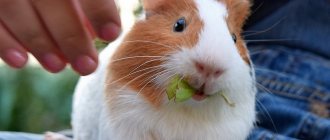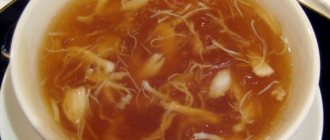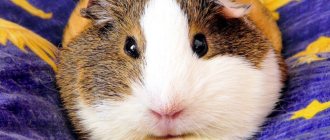The rat is an amazing pet that everyone in the household loves, so they try to prolong its life as much as possible. The basis for a pet’s good health is proper living conditions and a nutritious diet.
Not everyone thinks about what to feed a rat correctly. It is generally accepted that it is omnivorous and indestructible; it can easily eat even a piece of cardboard or sawdust. In most situations, rat owners go in two ways: either they feed the rat like a hamster, or they give away table scraps. Both of these approaches are wrong.
In fact, feeding a rat correctly is not difficult. You need to choose only healthy foods and give her the right amount of proteins, fats and carbohydrates.
Prohibited Products
Any prepared food, especially fried or spicy food, is prohibited for rats; canned food; sweet; alcoholic drinks; sweet drinks.
It is also undesirable to feed your pet from the owner's table: the food sold in specialized stores is already balanced and includes all the necessary vitamins. If you give your pet food from the table, the animal may refuse its food. Afterwards, it will be very difficult to wean the animal off junk food.
If you want to pamper your pet with fruits or vegetables, it is very important that they are in season, otherwise there is a risk of poisoning from harmful pesticides that are used for quick growing and long-term storage.
Grains and cereals - which ones should you avoid?
Grains form the main diet of rats, but it is necessary to know which grains can be fed and which cannot.
- Wheat is allowed for rats, but requires supplementation with other types of grains. Very high in calories. Wheat can be diluted with rice, buckwheat, corn and other grains.
- Buckwheat is considered dietary, has few calories, and can be added to the diet of rats.
- Corn, on the contrary, is high in calories; it is advisable to give it less often than others and as an additive to other grains.
- Oats - can cause fermentation, so it can be given, but in small quantities.
- Rice is considered to have little nutritional value, so it is advisable to feed either wild or brown rice.
- Semolina does not contain anything beneficial for the rat’s body, and veterinarians advise excluding it from the diet.
- Millet or barley - they can be given in the form of ready-made porridge for weakened animals, or for nursing offspring; adults can sometimes be given for variety.
Choosing food
The basis of a rat's diet is a grain mixture. You need to choose a trusted manufacturer who maintains balance when formulating feed. If you can’t find good ready-made food, it’s better to cook it yourself than to buy low-quality food, which consists of almost 80% oats. A complete diet should include oats, wheat, barley and rye.
It is better not to take food in a cardboard box, as it is stored in unsealed packaging, and if it was near chemicals, the rat can easily get poisoned. You only need to buy formulations in airtight packaging, and it is better to do this not in a regular supermarket, but in a specialized veterinary store.
You can buy not only grain mixture, but also granulated food. This food is similar in composition to regular grain food; it is purchased when the rat eats selectively, eating the most delicious food and leaving the grain untouched.
Vegetables and greens
Vegetables are very healthy and are allowed to be consumed daily, but in small quantities.
- Cabbage - any kind is undesirable for consumption, because... causes fermentation.
- Broccoli – can be given as an occasional treat.
- Radishes/turnips/radishes and some legumes (beans, lentils) cause increased discomfort due to gas formation, so their consumption is undesirable.
- Carrots/zucchini/pumpkin are very healthy, rich in vitamins, so their consumption is recommended.
- Eggplants/artichokes – only boiled ones are allowed; when cooking for an animal, adding salt or spices is not required.
- Cucumbers/beets – can cause stomach upsets in the form of diarrhea, so their consumption is undesirable.
- Potatoes have no value and are even prohibited in their raw form.
- Dill/parsley/celery, etc. are very beneficial for the digestion of rats, so it is advisable to add greens to their food daily.
- Tomato/sorrel – contain acid, consumption by rats is undesirable.
Protein in a rat's diet
A rat is not a rabbit or a guinea pig, it cannot thrive on a vegetarian diet, it is important for it to get protein. Adults are given protein food twice a week, and young animals twice as often. But moderation is important in this matter - an adult animal needs only 20 g at one time.
The rat can be given lean boiled meat, boiled eggs, fish, shrimp or squid. If you have several rats living at home, then you need to give them protein supplements individually, since they really love such food and can fight for it. As a result, someone will be oversaturated, and someone will not receive their norm.
If you give a rat an egg, boil it soft-boiled so that the rat does not choke on the boiled yolk. A quail egg can be given with the shell, the rat will peel it itself or eat it straight away.
The animal loves fish or seafood, but after eating it, its urine acquires an unpleasant odor.
Fruits
- Citrus fruits are prohibited for consumption, because may cause allergic reactions due to increased acidity. A piece of tangerine is allowed as a treat (sometimes).
- Forest/garden berries – the acidity of the berry must be taken into account. Cranberry is very useful, but you need to give it a little and watch the reaction.
- Pear – may cause fermentation, should be given occasionally.
- Plum – has a laxative effect, its use in the diet of rats is undesirable.
- Watermelon/melon – a small amount is allowed, but must be seasonal.
- Dried fruits can also provoke fermentation; they are given occasionally as a tasty treat.
It is important to know that eating seeds from berries and fruits is unacceptable; they are very harmful to animals and can cause poisoning.
Treats for rats
The rat is trainable; it can be taught to carry out several simple commands. But during training, you need to encourage the animal without harming it. And even without training, sometimes you want to pamper your pet with a tasty treat.
The main thing to remember is that the treat should not be sweet. Use nuts or seeds, give 1 piece to the paws a couple of times a week. This is a fatty and high-calorie product that can cause damage in large quantities. Nuts or seeds should not be fried or salted. You can give watermelon, pumpkin, sunflower, and sesame seeds.
Other incentive products may include:
- unsweetened wheat or corn flakes;
- biscuits;
- puffed rice or popcorn without additives;
- pasta;
- porridge.
You can take a stick and dip it in yogurt; the rat loves to lick it.
Milk products
All dairy products will be beneficial to your rat's health, but it is important to be aware of the possibility of a lactose allergy. It is advisable not to give pure milk, but other fermented milk can be given, but without fanaticism, you need to introduce new products little by little, observing the reaction. It is also undesirable to consume homemade sour cream/cream/cheese; often such products have a high fat content, which can cause digestive disorders.
Possible and useful:
- cottage cheese;
- fermented baked milk;
- pure yogurt;
- kefir.
Any fermented milk product should have no more fat than 4%. When it comes to low-fat products, it is advisable to choose non-perishable or children's dairy products.
Features of proper feeding
Care and maintenance of a pet rat ensures its full existence in the apartment. At home, it is important to strictly follow the main recommendations, which mainly relate to the proper nutrition of rodents.
Before keeping pet rats at home, you should carefully study the main recommendations for their nutrition:
- It is imperative to take into account the volume of food - it should be moderate. There is no need to overfeed your rat because this may cause it to gain excess body weight. If after a meal the rat is left with uneaten food, it means that the rodent needs to be given less food;
- Rats are omnivores, but you shouldn't feed them just any food. The menu of these animals should include different foods with a high content of mineral components and vitamins;
- How many times a day should these animals be fed? Feeding should be done twice a day;
- The largest amount of food needs to be given to rats in the evening, because they are considered nocturnal animals;
- Rodents love to gnaw on various branches, which ensure the grinding of teeth. For this reason, they need to be given solid food; sometimes branches can be placed in the cage.
What to feed a little rat
A mother rat feeds her offspring with milk. However, there are times when she does not want to do this. In this case, responsibility for the life of the offspring will fall on the shoulders of the animal owner. To feed baby rats, you can purchase a lactating female at a pet store or feed the babies yourself.
To feed babies, you can use a pet milk replacer. Dry soy baby formula diluted with a small amount of goat's milk or condensed milk is also perfect.
Important! Liquid formula can be stored in the refrigerator for no longer than 12 hours. The formula will need to be warmed up slightly
To feed your offspring, it is better to use an insulin syringe with an internal catheter at the tip. You can also take a pacifier made from pieces of cotton fabric
The milk mixture will need to be warmed up a little. To feed your offspring, it is better to use an insulin syringe with an internal catheter at the tip. You can also take a pacifier made from pieces of cotton fabric.
After each meal, you should pour boiling water over the items. To avoid the development of enteritis in young animals, it is worth giving small rats a course of Biovestin.
Below you can find detailed information regarding the principle of feeding animals by week:
- In the first 7 days of a rodent's life, it is worth feeding them every 120 minutes. liquid diluted milk formula. Closer to the 7th day of life, it is worth diversifying the menu with milk formula, to which a small amount of dry ground grain feed has been added;
- in the second week, the mixture for rodents can be diluted to a consistency that will resemble liquid sour cream. You will need to drink the mixture every 3-4 hours;
- in the third week of life, you can pour the food mixed with the mixture into a bowl. From 23.00 to 6.00 you can not feed the offspring;
- At 4 weeks, animals can be switched to dry food. From the 30th day of life, rodents should be given food that is familiar to adults. If desired, rat pups can be fed milk until the end of the second month of life.
Babies will need to be fed the mixture every 2 hours.
What menu should kids have? When choosing a diet for little rats over 4 weeks old, you should give preference to:
- dry grain;
- boiled chicken, turkey and fish fillets;
- cottage cheese;
- dill and cilantro;
- bananas;
- apples;
- wheat sprouts;
- oats;
- chicken egg yolks;
- boiled chicken and turkey liver.
Under no circumstances should children be allowed to indulge in:
- cucumbers;
- champignons;
- garlic and onions;
- tomatoes.
Note! When rat pups are fed milk by their mother, they can only be fed by the 21st day of life. It is best not to wean babies early from breastfeeding, which has a positive effect on strengthening the animal’s immunity.
Organizing the right diet for your beloved rodent is important; this will allow you to raise the animal healthy. It is important to give up the desire to pamper your four-legged friend with table scraps such as sweets and sausage, as this can provoke the development of various pathologies of internal organs











